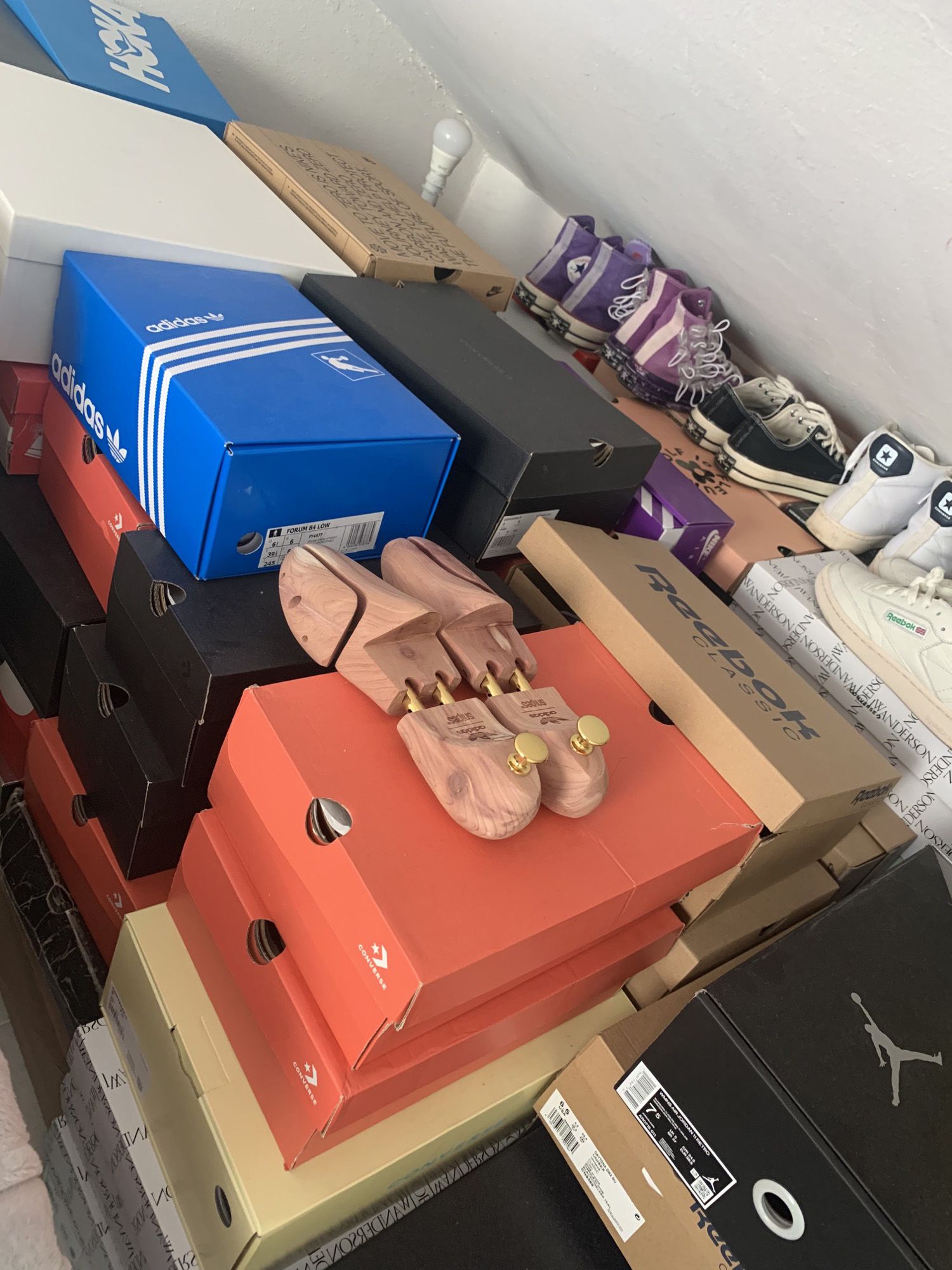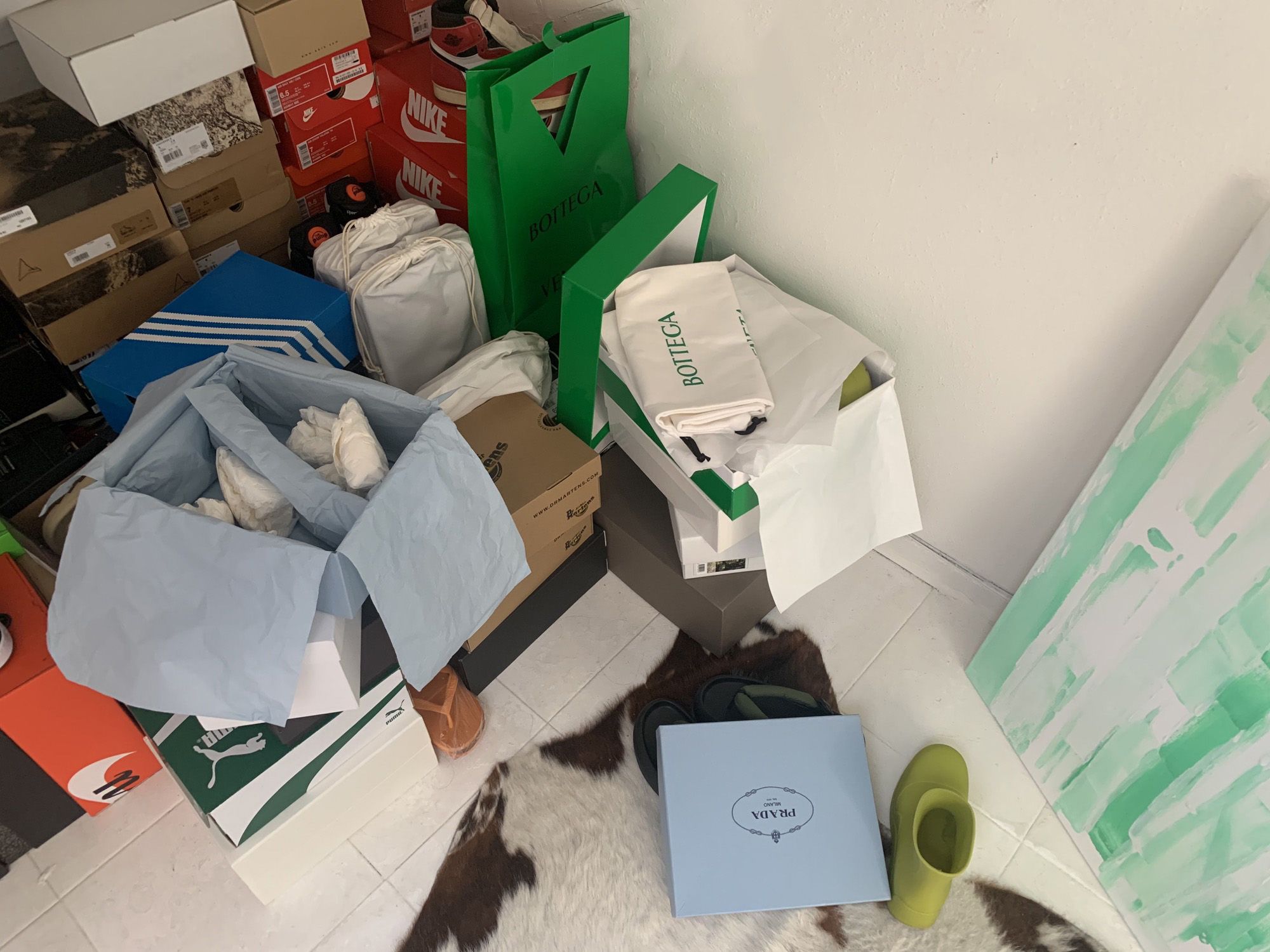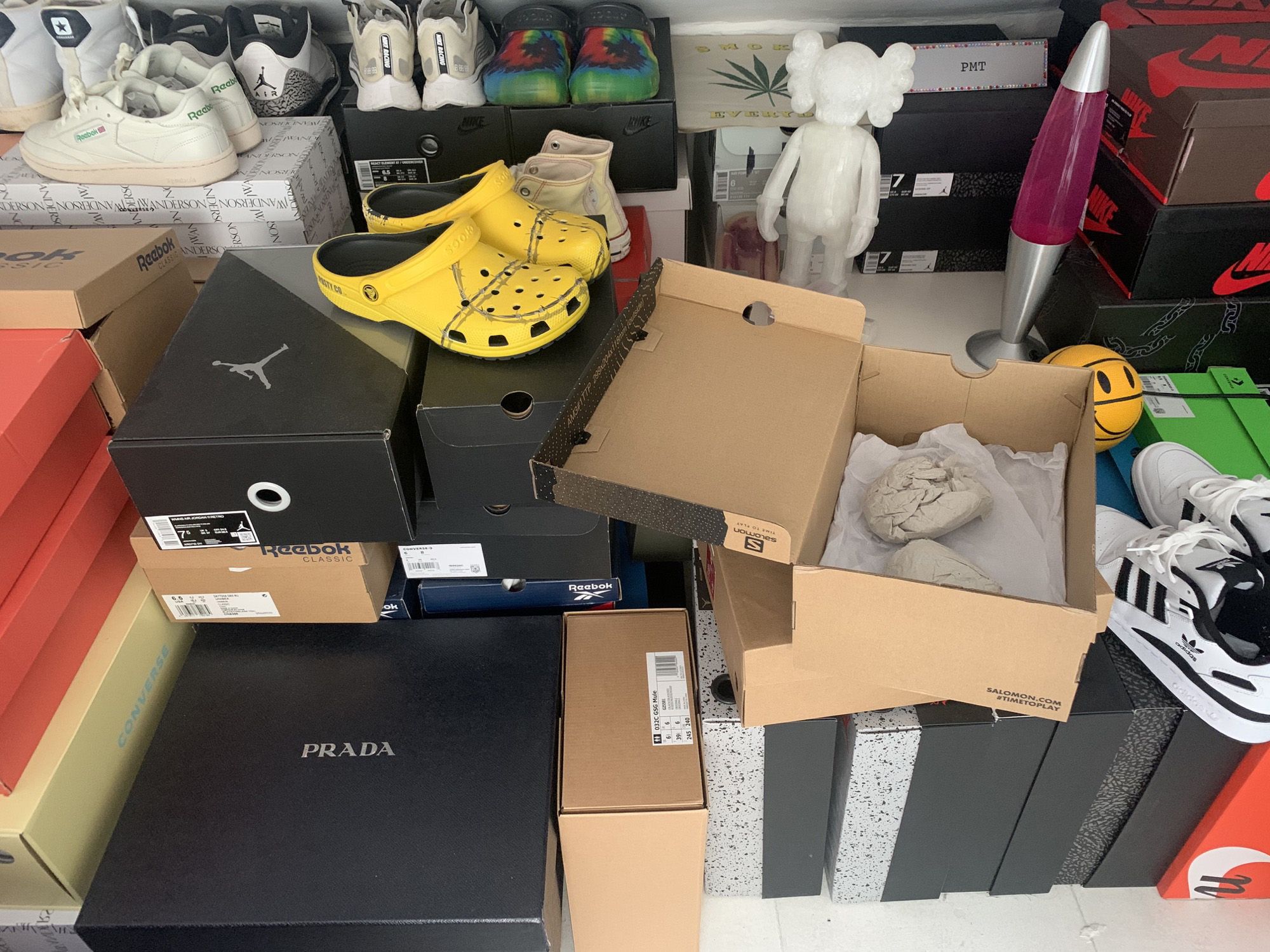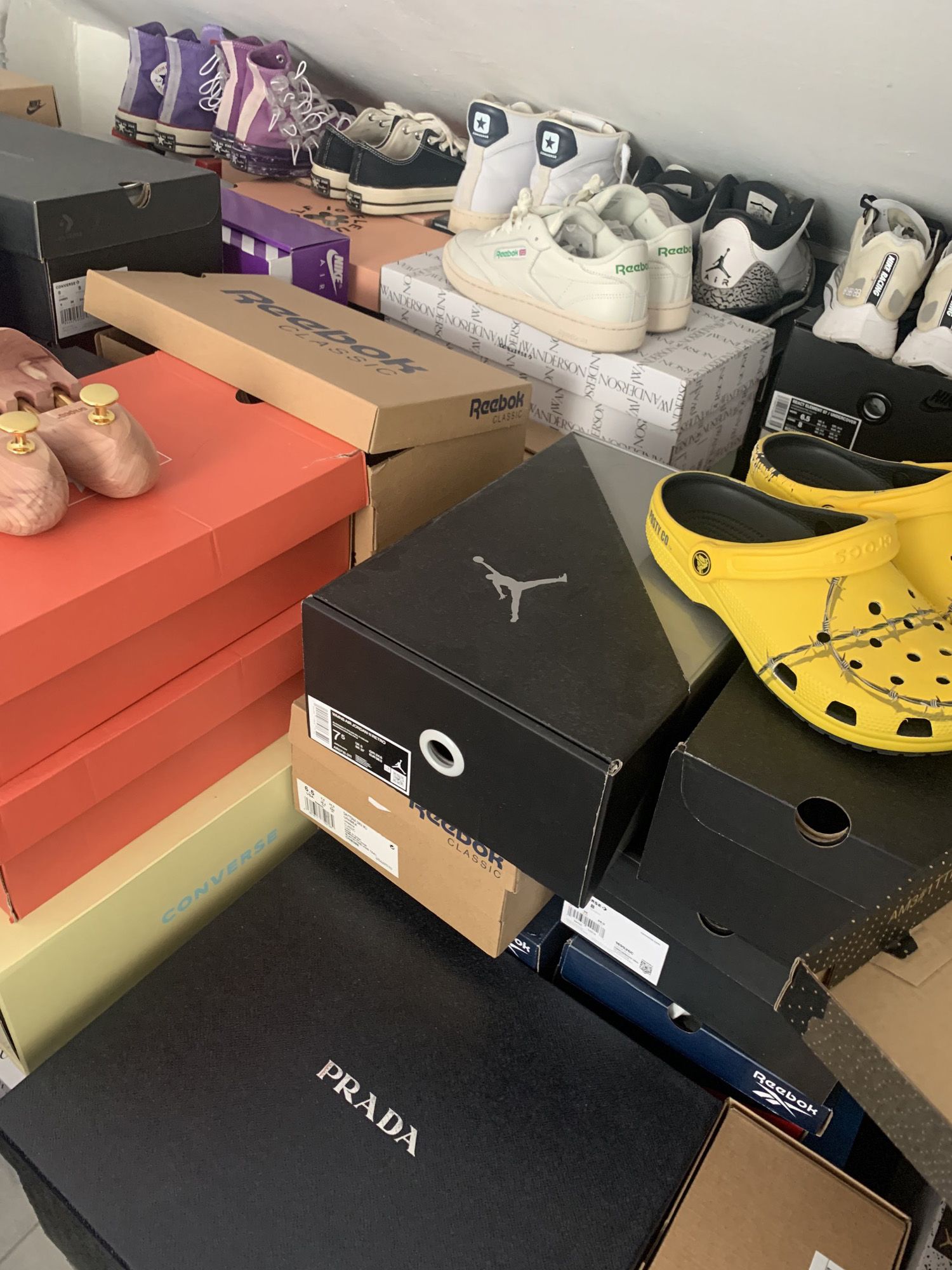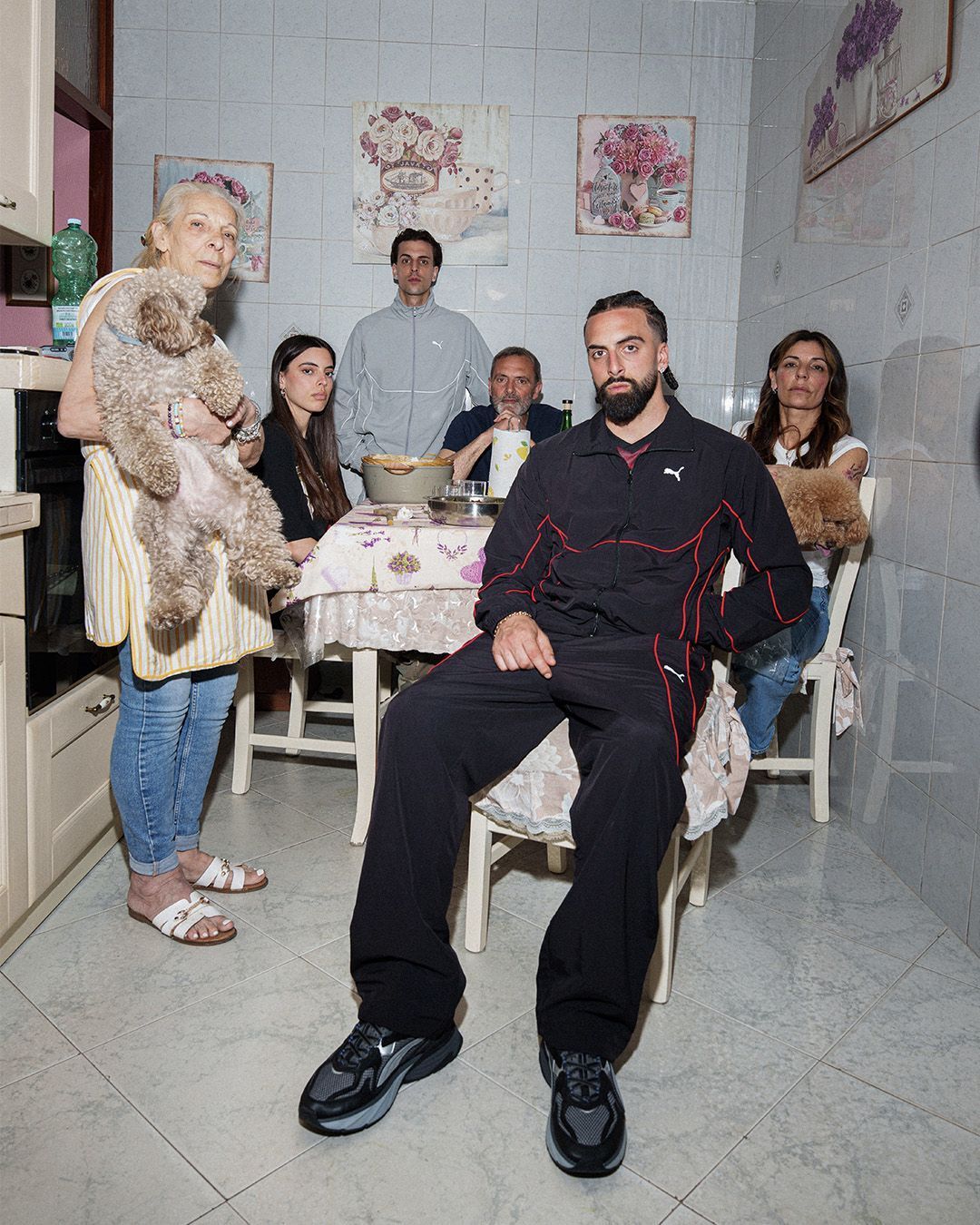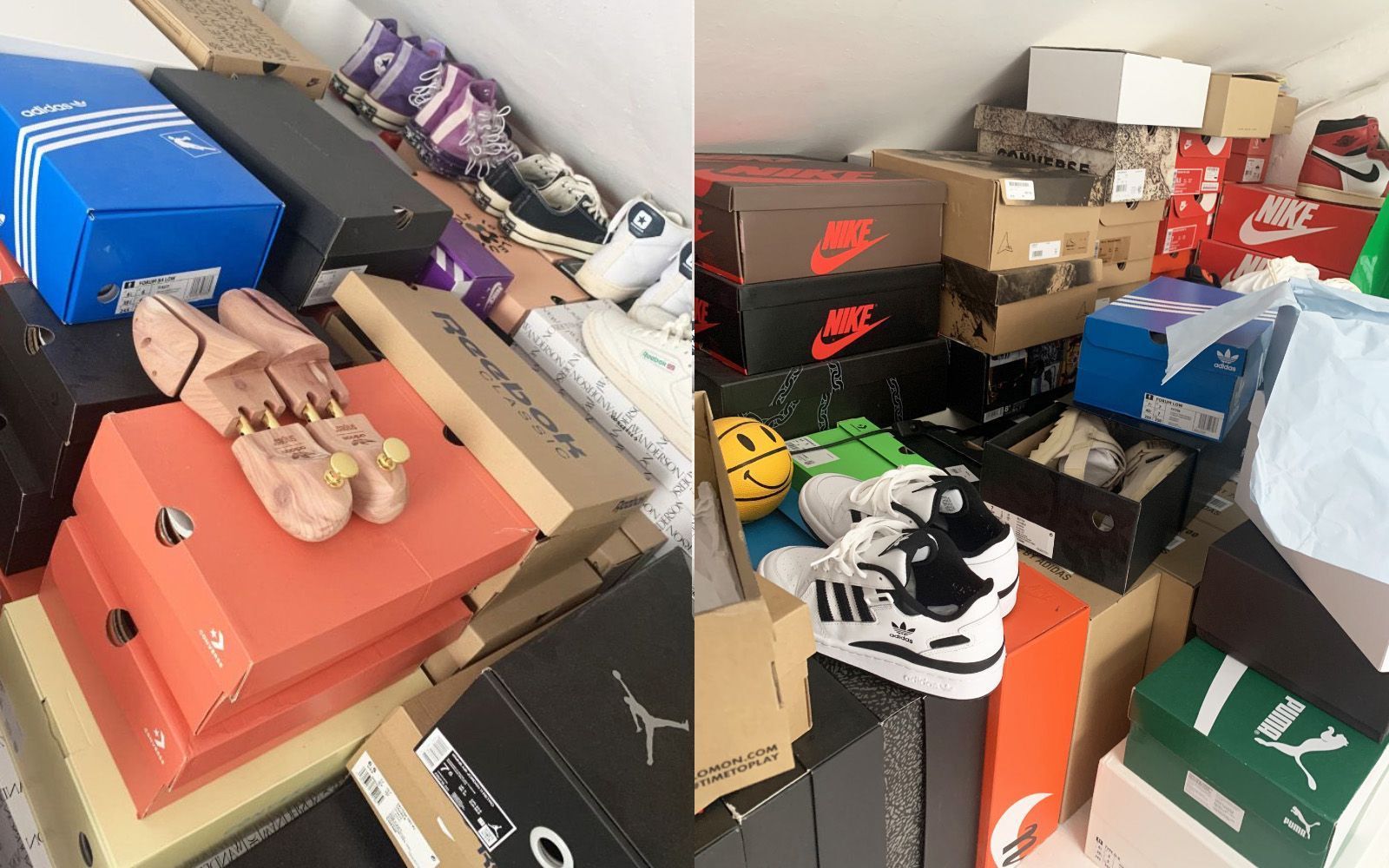
The obsession for sneaker boxes Halfway between simple packaging and collector's items
A few weeks before moving from Rome to Milan, my mother asked me with a mixture of concern and disdain what I would do with all those shoeboxes piled on a shelf in my bedroom able of multiplying visibly. If at the beginning there were two, after a few months they became ten, then twenty and eventually more than thirty. Large and small, coloured and monochromatic, rectangular and square. If you also fall into that category generally defined as sneakerhead you will have discounted yourself several times in your career with the age-old problem of shoe boxes. What to do with it? If for many people the practice is to throw them away, in the sneaker game bubble the boxes have become a cult object with a value almost equal to that of a sneaker, an essential accessory for the purpose of purchase and capable of fluctuating the price of the product itself.
@nikelondon @Nike how do you feel about @OffspringShoes smashing all these boxes to ‘prevent reselling’ ? pic.twitter.com/3HemXbSKbV
— . (@_Dot_to_Dot_) June 11, 2021
The proof comes from what happened at Offspring, the London store that a few weeks ago decided to post on its profiles the videos of some clerks intent on destroying boxes shouting "We don't wear boxes!" with the aim, according to the store, to discourage resellers. Obviously, this didn't go unnoticed and in a few days, Offspring was forced to apologize for what had happened by opening the doors of a discussion that touches the nerve of every sneaker enthusiast: does it make sense to give value to the pits? If a rational part could lead you to say no without hesitation, the answer is actually more complex than expected. In the complicated rules that govern the world of reselling, the box has such a weight as to affect not only the price but also the market itself of a shoe. Many buyers would never buy an Air Yeezy without its original box and sites like StockX or Klekt follow the same logic for their transactions, thus adding value to an item that in some cases can become just a mere clutter. “I consider them an integral part of the shoe, even if obviously they are boxes that have no value. This is why it would be appropriate to make a distinction between special and non-special boxes” told us Ilaria Grande, a sneaker enthusiast who also sees the pits under another lens: that of sustainability. “The problem lies a bit at the base, because certainly many boxes are not sustainable, even if they can be the best way to keep the shoe well and for a long time. When you start to have so many it becomes convenient to put them in your boxes just to keep them in order." It is starting from this assumption that the very nature of the boxes can be called into question, both from the point of view of a more sustainable approach and that of giving a new meaning to an object that is now experienced in an all too passive way.
If in some releases the boxes become almost objects of art, pieces of furniture that in cases like the Dunk Ben & Jerry's create a thematic link with the sneaker, in others, they are limited to simple cardboard boxes useful only for their purpose main. A bit like what happens with the sneaker market itself, even the boxes are starting to have a spasmodic need for innovation. From sustainability to design, the time has come to say goodbye to those shapeless piles of cardboard piled up in our bedrooms in a revolution that does not have to start with the buyer, almost helpless in front of the logic that moves a huge and boundless market, the market itself, by the brands called once again to unravel a situation born out of their laziness. “I think it depends a lot on the person who owns it and what meaning they want to give to the box,” said Luca Santeramo, content creator active on Instagram and Youtube. “I like to display them in the room to give them greater meaning and enhance them as exhibits. There are also those who buy a 2000 € shoe and throw the box away, it depends on the type of value we want to give to the boxes individually as buyers. " The truth then perhaps lies in the middle, in the ability of brands to whet the imagination of a community that must be receptive and able to seize the opportunities that arise. If eliminating them seems only the dream of all mothers frustrated by the clutter in their neo sneakerhead children's bedrooms, reimagining them could be the right step to change a small portion of an industry desperate for change.










































